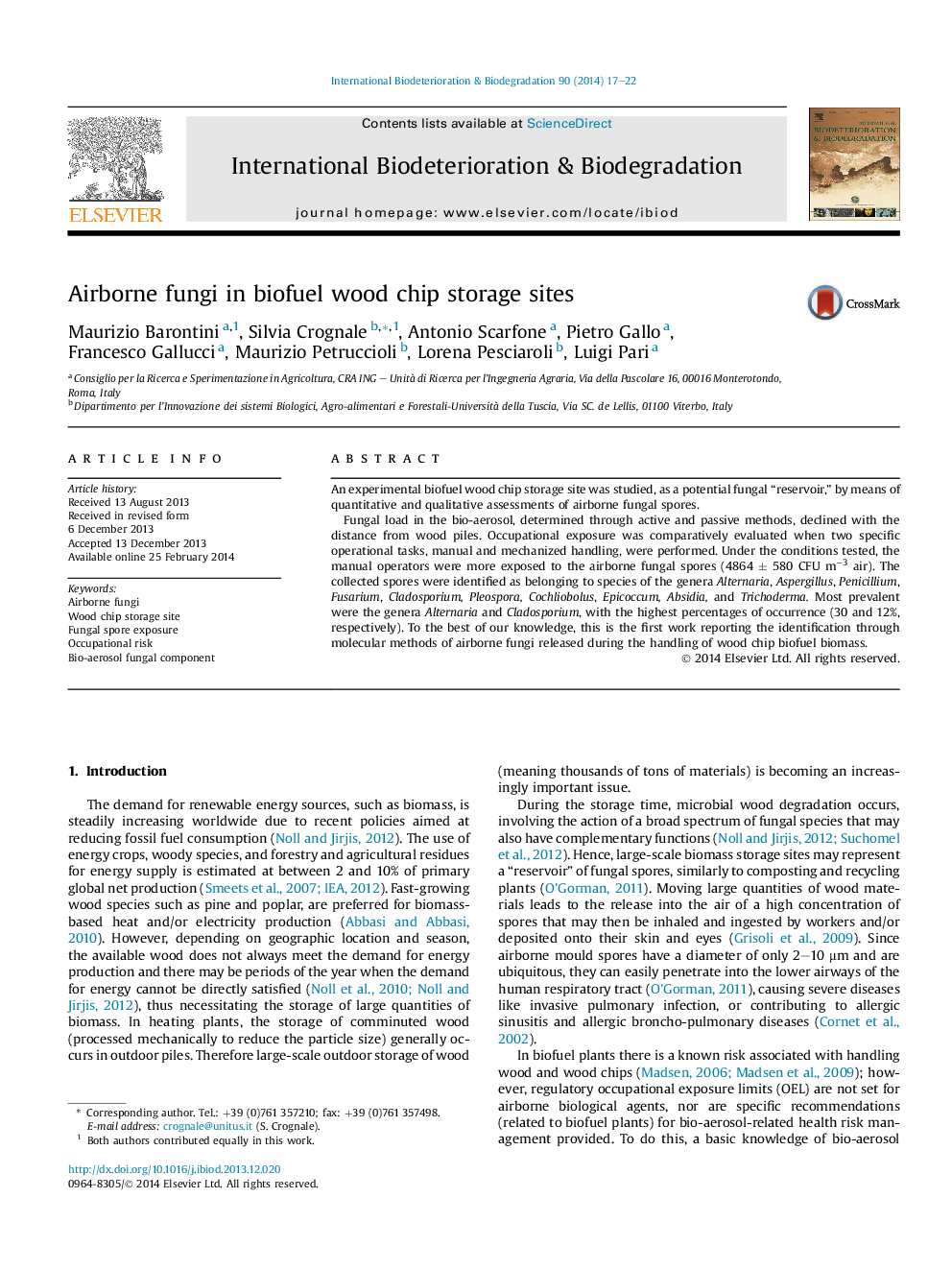| Article ID | Journal | Published Year | Pages | File Type |
|---|---|---|---|---|
| 4364780 | International Biodeterioration & Biodegradation | 2014 | 6 Pages |
•Amount of fungal spores, during movement operations, was over the value of 1000 CFU/m3.•Personnel exposure to bio-aerosol was strictly depending to the specific work tasks.•The airborne spores were identified through molecular methods.
An experimental biofuel wood chip storage site was studied, as a potential fungal “reservoir,” by means of quantitative and qualitative assessments of airborne fungal spores.Fungal load in the bio-aerosol, determined through active and passive methods, declined with the distance from wood piles. Occupational exposure was comparatively evaluated when two specific operational tasks, manual and mechanized handling, were performed. Under the conditions tested, the manual operators were more exposed to the airborne fungal spores (4864 ± 580 CFU m−3 air). The collected spores were identified as belonging to species of the genera Alternaria, Aspergillus, Penicillium, Fusarium, Cladosporium, Pleospora, Cochliobolus, Epicoccum, Absidia, and Trichoderma. Most prevalent were the genera Alternaria and Cladosporium, with the highest percentages of occurrence (30 and 12%, respectively). To the best of our knowledge, this is the first work reporting the identification through molecular methods of airborne fungi released during the handling of wood chip biofuel biomass.
